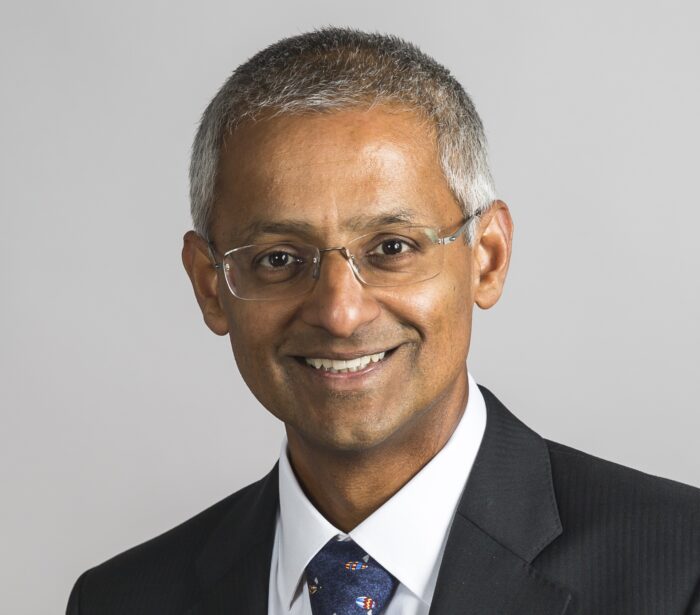
The LMB is thrilled to welcome Shankar Balasubramanian to deliver the 2025 Francis Crick Lecture on Wednesday 19th February at 11am (GMT). The lecture, titled ‘The DNA Quadruplex Helix’ will take place in the LMB’s Max Perutz Lecture Theatre and will be streamed on Zoom where any who are interested are invited to join.
Shankar Balasubramanian is the Herchel Smith Professor of Medicinal Chemistry in the Yusuf Hamied Department of Chemistry at the University of Cambridge, Senior Group Leader at the Cancer Research UK, Cambridge Institute, and Fellow of Trinity College, Cambridge. His work to develop next generation sequencing has proved transformative to the fields of biology and medicine and formed the scientific basis for two companies he co-founded: Solexa and biomodal (formerly Cambridge Epigenetix).
Shankar’s research is focused on better understanding the chemistry, structure and function of nucleic acids. Harnessing a multi-disciplinary approach using methodology from chemistry and molecular biology, his group investigate the molecular mechanisms which govern G-quadruplexes – four-stranded DNA secondary structures which form in G-rich regions of the human genome and are implicated in gene transcription. Additionally, his group are also seeking to determine the capacity of chemically modified DNA nucleobases to differentially recruit proteins and contribute to genome function. Shankar’s work on these topics has led to the development of novel, influential techniques, including next generation DNA sequencing and methods to sequence DNA modifications and secondary structures.
Shankar’s research accomplishments have been recognised with several prestigious awards, including the Breakthrough Prize in Life Sciences, the Canada Gairdner International Award, the Royal Medal from the Royal Society, and a Knighthood for services to science and medicine. He is a member of the National Academy of Sciences, the Royal Society, EMBO, and the Academy of Medical Sciences.
Lecture abstract
While DNA has been thought to exist primarily as a two-stranded double helix, there are alternative structures that can form. Particular G-rich sequences can fold into four-stranded structures called G-quadruplexes under physiological conditions. In this lecture, I will present our studies to explore the existence and function of G-quadruplexes structures in the DNA of cells and tissues in humans and in other species. The data suggests G-quadruplexes can play important roles in controlling transcription and cellular identity. Chemical biology approaches have been vital to help elucidate G-quadruplexes and provide insights into pathways for intervention that hold potential for therapeutics.
Background information
The Francis Crick Lecture is given in honour of LMB alumnus and Nobel Laureate Francis Crick. It is one of a series of named lectures organised by the LMB given be eminent scientists from around the world. These talks are supported by AstraZeneca and the Max Perutz Fund.
Francis Crick was born in Northampton in 1916. He received a B.Sc. in Physics from University College London in 1937. His subsequent Ph.D. studies were interrupted by World War II, during which he worked on the design of acoustic and magnetic mines for the British Admiralty. In 1948 he joined Max Perutz’s MRC Unit for Research on the Molecular Structure of Biological Systems (renamed the MRC Laboratory of Molecular Biology in 1962). It was here that he helped solve the structure of DNA and initiated work on the genetic code. In 1976 he moved to the Salk Institute in California where he immersed himself in trying to define how we are aware of things, looking to find a neuronal correlate of consciousness. He continued with this until his death in San Diego on 28 July 2004.
Further references
Recorded lecture on YouTube
Professor Sir Shankar Balasubramanian FMedSci FRS
Francis Crick Biography
LMB Named Lectures